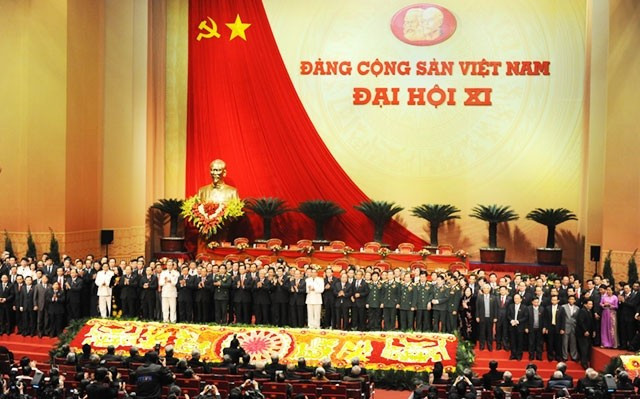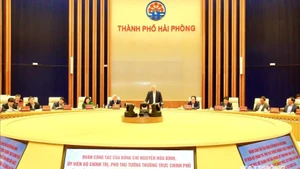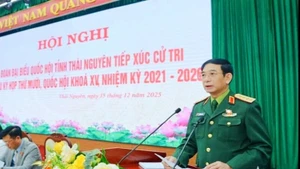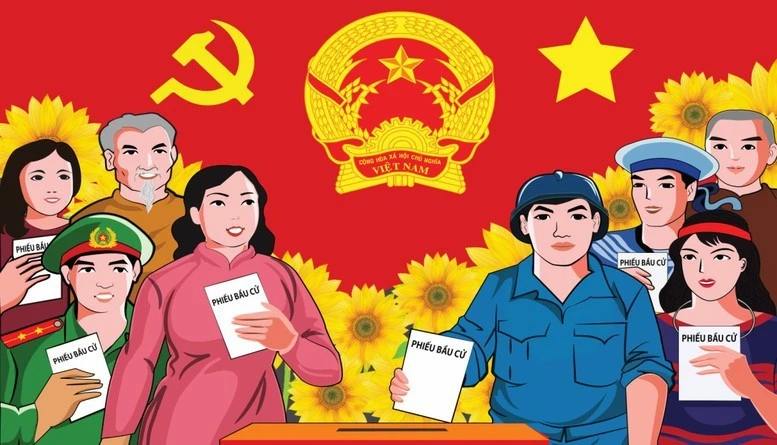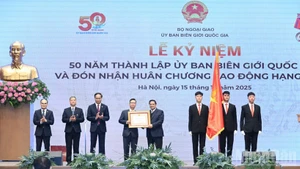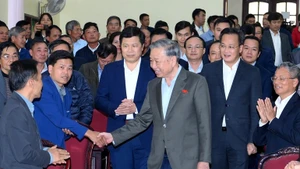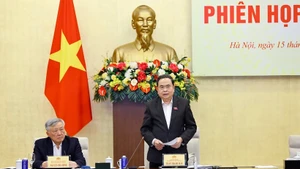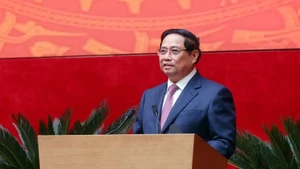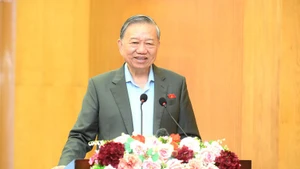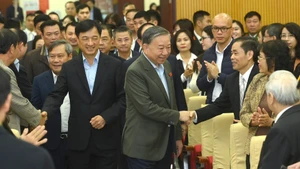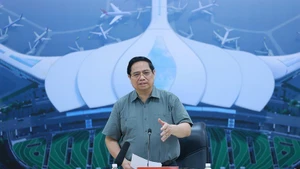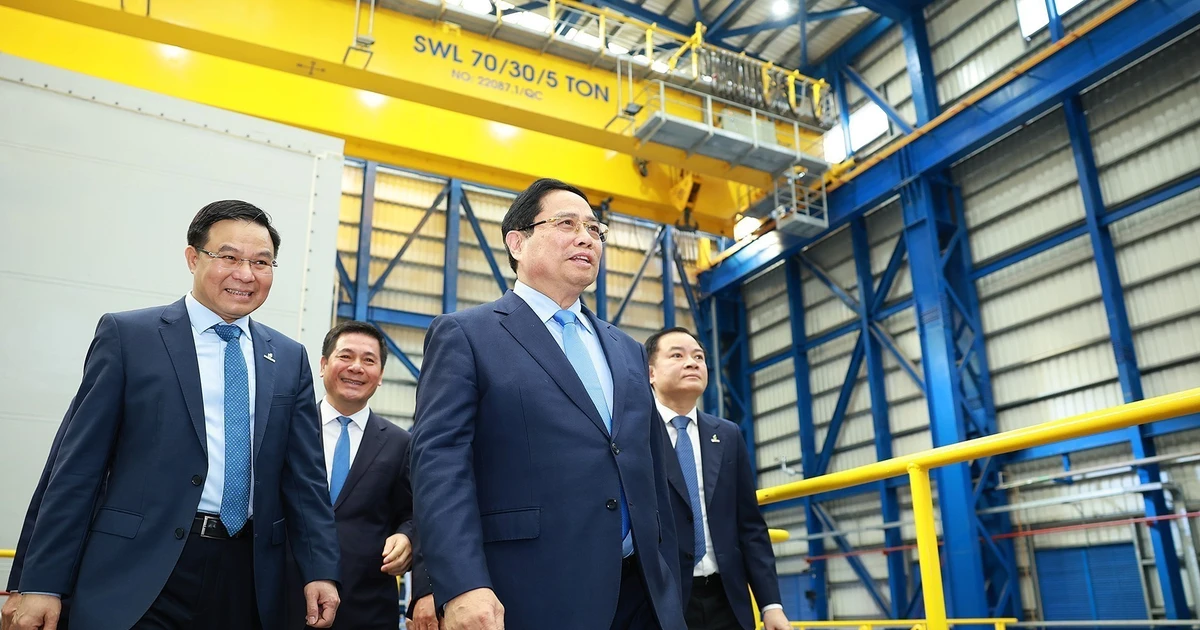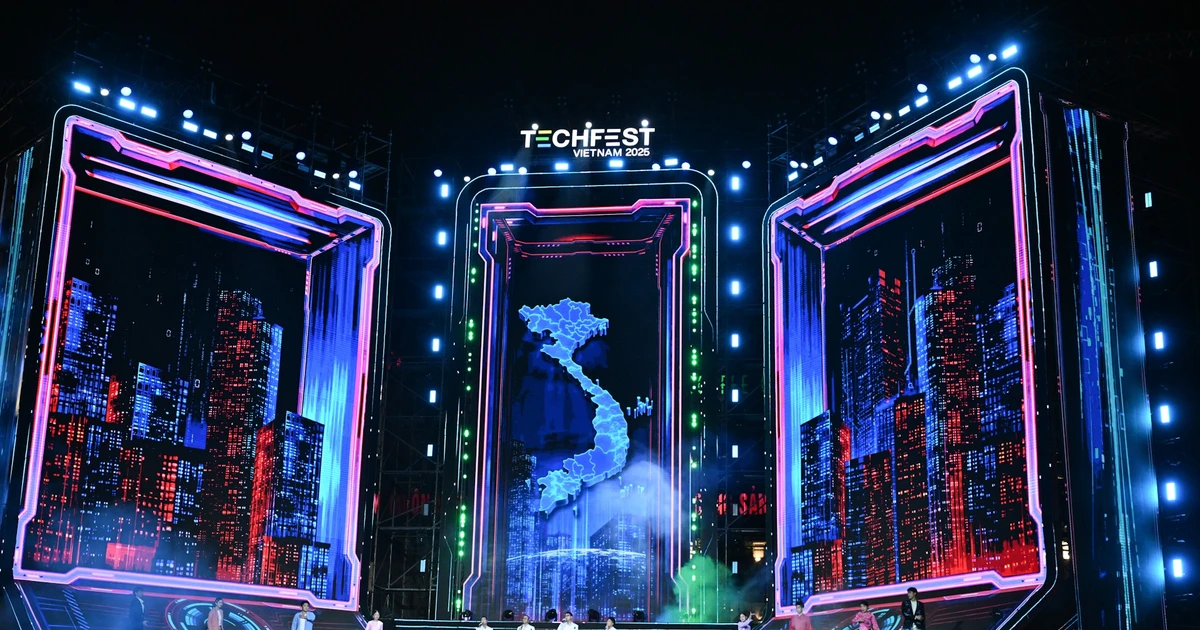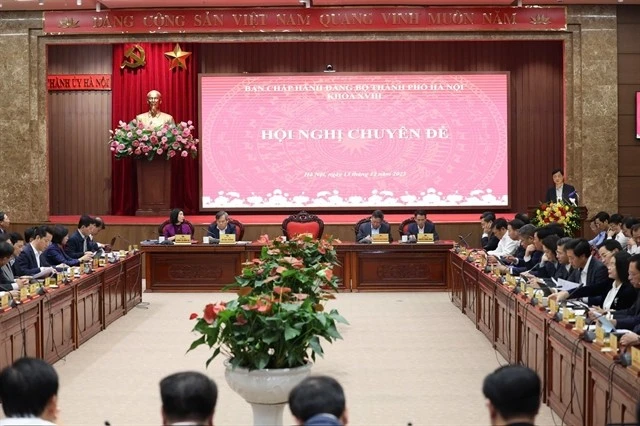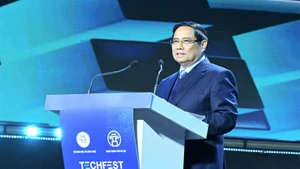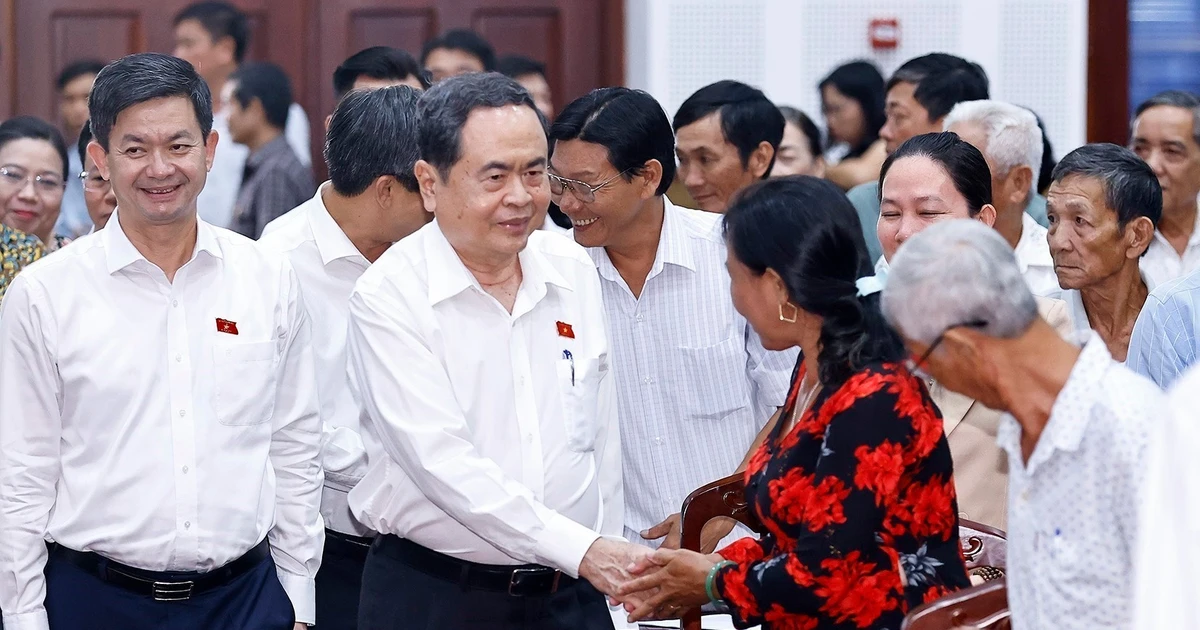The congress reviewed the implementation of the Resolution of the 10th National Party Congress and set out orientations and tasks for the 2011–2015 period; summarised the implementation of the 10-year Socio-Economic Development Strategy for the 2001–2010 period and determined the 10-year Socio-Economic Development Strategy for the 2011–2020 period; and reviewed, supplemented, and developed the 1991 Platform.
The congress evaluated that the ten years of implementing the 2001–2010 Socio-Economic Development Strategy was a period in which the country really promoted industrialisation and modernisation, developed the socialist-oriented market economy, and accelerated international integration, achieving great and significant achievements.
The overall targets for the 2011–2016 period were: to continue improving the leadership capacity and combat strength of the Party; to comprehensively accelerate the renewal cause; to build a clean and strong political system; to promote democracy and the great national unity; to develop a rapid and sustainable economy; to improve the material and spiritual living standards of the people; to maintain political and social stability; to strengthen external relations; to firmly safeguard independence, sovereignty, unity, and territorial integrity; and to create the foundation for Viet Nam to basically become an industrialised country in a modern direction by 2020.
The congress set out strategic breakthroughs, including: completing the socialist-oriented market economy institutions, focusing on creating an equal competitive environment and promoting administrative reform; rapidly developing human resources, particularly high-quality human resources, with a focus on basic and comprehensive reform of the national education system; closely linking human resource development with scientific and technological development and application; and building a synchronised infrastructure system with some modern and large-scale projects, particularly in the transport system and infrastructure in large urban areas.
The congress adopted the Platform for National Construction in the Transitional Period Towards Socialism (supplemented and developed in 2011), affirming that:
The socialist society that our people are building is a society of prosperous people, strong country, democracy, equality, civilisation; the people are the masters; the economy develops highly based on modern productive forces and progressive production relations; there is an advanced culture imbued with national identity; people enjoy a prosperous, free and happy life and have opportunities for comprehensive development; ethnic groups in the community of Viet Nam are equal, united, respected, and help each other to develop together; there is a socialist rule-of-law state of the people, by the people, and for the people, led by the Communist Party of Viet Nam; and the country maintains friendly and cooperative relations with countries around the world.
The general targets at the end of the transitional period in Viet Nam is to basically build the economic foundation of socialism, with a corresponding political, ideological, and cultural superstructure, thereby laying the foundation for Viet Nam to become an increasingly prosperous and happy socialist nation.
From now until the mid-21st century, the entire Party and people must make efforts to build Viet Nam into a socialist-oriented modern industrialised country.
The platform set out eight fundamental directions, including: promoting industrialisation and modernisation of the country in association with developing a knowledge-based economy, protecting natural resources and the environment; developing a socialist-oriented market economy; building an advanced culture imbued with national identity; building human, improving people’s living standards, and implementing social progress and equality; firmly safeguarding national defence, security, order and social safety; implementing the foreign policy of independence, self-reliance, peace, friendship, cooperation and development; proactively and actively integrating into the international community; building socialist democracy, realising great national unity, and strengthening and expanding the national united front; building a socialist rule-of-law state of the people, by the people, and for the people; and building a clean and strong Party.
The congress adopted the Party Charter (supplemented and amended).
The congress elected the 11th Central Committee of the Communist Party of Viet Nam, consisting of 175 official members and 25 alternate members.
The Central Committee of the Communist Party of Viet Nam elected the Politburo, with 14 members. The Secretariat comprised several Politburo members assigned by the Politburo and four members elected by the Party Central Committee.
Comrade Nguyen Phu Trong was elected as the General Secretary of the Communist Party of Viet Nam.
At the 7th Plenum of the 11th Party Central Committee, held from May 2 to 11, 2013, the Party Central Committee elected two additional Politburo members and one Secretariat member.
The 4th Plenum of the 11th Party Central Committee, held from December 26 to 31, 2011, issued a resolution on “Current urgent issues on Party building.”
(Compiled from Documents of the 11th National Party Congress; Nhan Dan Newspaper; tulieuvankien.dangcongsan.vn)
GENERAL CONTEXT
January 12–19, 2011: The 11th National Party Congress adopted the Platform (supplemented and developed in 2011).
December 26–31, 2011: The 4th Plenum of the Party Central Committee issued a resolution on current urgent issues in Party building.
May 2–11, 2013: The 7th Plenum of the Party Central Committee elected two additional Politburo members and one Secretariat member.
2011–2015: GDP increased by an average of 5.9% per year; macroeconomics was stable; inflation was controlled.
2015: Per capita GDP reached 2,109 USD, nearly achieving the target of 2,000 USD.
DOMESTIC SITUATION
After 25 years of renewal, 20 years of implementing the Platform for National Construction in the transitional period towards socialism, and 10 years of implementing the 2001–2010 Socio-Economic Development Strategy, the country has overcome the status of underdevelopment; national strength has been enhanced in all aspects; independence, self-reliance and the socialist regime have been firmly maintained; and Viet Nam’s position and prestige in the international arena have been elevated.
Targets for the 2011–2015 period: GDP growth of 7–7.5% per year; per capita GDP of around 2,000 USD; high-tech products accounting for 35% of GDP; and total social investment capital at 40% of GDP.
However, hostile forces continued to sabotage and incite riots, intensifying activities of “peaceful evolution.”
INTERNATIONAL SITUATION
Ending the first decade of the 21st century, the international situation developed complexly and unpredictably.
Although peace, cooperation, and development remained the dominant trend, local wars, armed conflicts, terrorism, political-social instability, sovereignty, and territorial disputes — especially in the East Sea/South China Sea — continued to develop complicatedly.
Natural disasters, pandemics, energy crises, environmental pollution and climate change became increasingly serious issues on a global scale.
The financial crisis originating in the US spread, turning into a global financial crisis and economic recession.
The Fourth Industrial Revolution began with digital technology, artificial intelligence and the Internet of Things (IoT), creating new opportunities and challenges.
